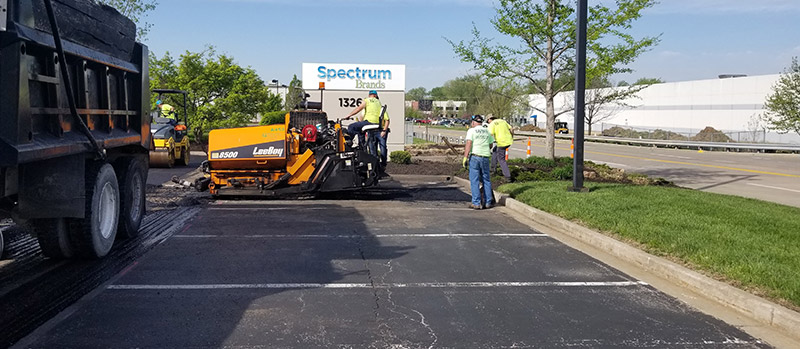The 15-Second Trick For A1 Professional Asphalt & Sealing Llc
The 15-Second Trick For A1 Professional Asphalt & Sealing Llc
Blog Article
Top Guidelines Of A1 Professional Asphalt & Sealing Llc
Table of ContentsMore About A1 Professional Asphalt & Sealing LlcThe Facts About A1 Professional Asphalt & Sealing Llc RevealedThe Greatest Guide To A1 Professional Asphalt & Sealing LlcHow A1 Professional Asphalt & Sealing Llc can Save You Time, Stress, and Money.Our A1 Professional Asphalt & Sealing Llc PDFs

The oil in an automobile engine is not just oil. It has a range of additives to boost the car's efficiency. These include polymers, thickness modifiers, heat stabilizers, added lubes, and wear ingredients. The REOB includes all the ingredients that were in the waste oil as well as the wear steels from the engine (primarily iron and copper).
However, by making lots of blends making use of different REOB samples and various asphalt binders, the variants largely can be averaged out. Numerous States gave examples of well-known REOB composition to TFHRC researchers, who examined the examples to contrast the portion of included (understood) REOB to the located (examined) quantity. The evaluations revealed an equivalent percent of included and located REOB.
3 Easy Facts About A1 Professional Asphalt & Sealing Llc Described
They obtained a frustrating action. The TFHRC researchers evaluated 1,532 examples from 40 States, one Canadian district, and two Government Lands Highway divisions. They assessed each example twiceamounting to greater than 3,000 evaluations. None of those States recognized that the asphalt they were purchasing contained REOB. One State urged its samples had no REOB.
Of the 1,532 samples tested, 12 percent had REOB, and some had significantly high levels of it at 1020 percent. The highest degree was 34 percent in an example from Texas, which TxDOT had used in a patching substance. This screening likewise revealed the visibility of phosphoric acid in 11 percent of the samples, and 2 percent included ground tire rubber.
2 years ago at TRB's yearly conference, the Federal researchers held an REOB workshop and offered the findings of their lab assessments to a standing room-only crowd. Some companies do not specifically prohibit REOB, they do impose physical tests that preclude its useeffectively a ban. Others do not ban it by spec, discover this info here but have arrangements with asphalt providers to stay clear of the use of REOB
Not known Facts About A1 Professional Asphalt & Sealing Llc
Ohio and Texas limitation degrees to much less than 5 percent of the asphalt. To establish a trusted examination approach that all States can use, the TFHRC scientists established up a round-robin examination strategy.
In total amount, the researchers prepared and delivered 720 blends. The individuals are checking the samples independently making use of the standards supplied by the TFHRC researchers. The round-robin screening is nearly completed, and TFHRC remains in the procedure of gathering the results. The output will be a recommended AASHTO test method that any State can adopt and use (asphalt sealcoating in st louis).
The pavement with REOB, which is located 0.6 mile (1 kilometer) from the pavement without REOB, has identical subgrade, website traffic thickness, and climate. However, the sector of Highway655 with 5 to 10 percent REOB showed substantial breaking. In this instance, the presence of REOB was the recognized cause of splitting at a reduced temperature levels.
A section of examination sidewalk in Minnesota (MN1-4) found to have REOB also fractured too soon. The sidewalk performed well for the very first 3 to 4 years, yet after that started to crack.
The smart Trick of A1 Professional Asphalt & Sealing Llc That Nobody is Talking About
The examinations were not extensive, but they showed that at levels of 6 percent or even more, the tensile toughness of the asphalt went down significantly. At a degree of 3.5 percent REOB, the variation in the physical examination approaches was more than the impact of REOB. As a matter of fact, it was tough for scientists to examine whether REOB existed.

One binder specification thought about is the difference in between the low temperature essential requirements temperature for stiffness (S) in the flexing beam of light rheometer and the bending light beam rheometer creep slope (m-value) kept in mind as Tcritical. Two independent research groups, one from AASHTO and the other from the Asphalt Institute, ended that even more research study is required on the use of REOB in asphalt.
Formerly, all asphalt testing measured design buildings such as tightness. These tests do disappoint what materials had actually been included in the asphalt. One example received throughout the TFHRC study had a really odd analysis. The example had the following examination results: Superpave PG 64-28 with a heat grade of 67.3 Tcritical on the flexing beam rheometer was 6.7 levels Celsius.

More About A1 Professional Asphalt & Sealing Llc
These results demonstrate there are weak points in the standard design screening procedures that may be exploited. The manufacturer might have a financial advantage and the product passes all the standardized examinations, yet the product may not be advantageous to guaranteeing long-lasting performance. To address this concern and the development of brand-new asphalt additives and extenders, TFHRC is starting a study program to utilize handheld spectroscopic devices, x-ray fluorescence spectroscopy, and Fourier change infrared spectroscopy to allow analyses to be carried out in the field as opposed to needing to take samples back to the lab.
Report this page